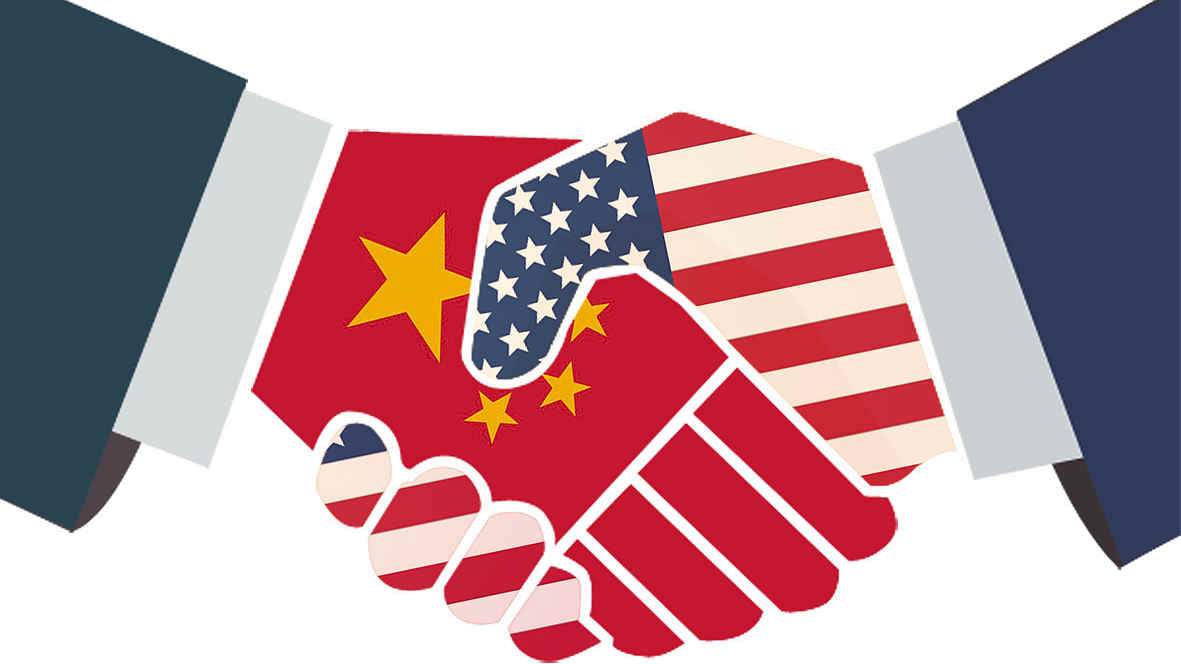Editor’s note: This article is translated from an article published in Chinese on www.huanqiu.com.
In the past two days, the American media have begun to report on the US Secretary of Commerce Ross’s visit to Beijing last weekend to negotiate the Sino-US trade distribution.
According to The Wall Street Journal, if China and the United States stop the trade war, China can import 70 billion US dollars of agricultural products and energy products from the United States in order to balance Sino-US trade.
Bloomberg, however, believes that China’s commitment to increase import data is actually 25 billion US dollars.
The report also said that China has always stressed that if the Trump administration continues to push forward the 50 billion US dollars Chinese goods tariff increase plan, the above procurement proposal will be abolished.
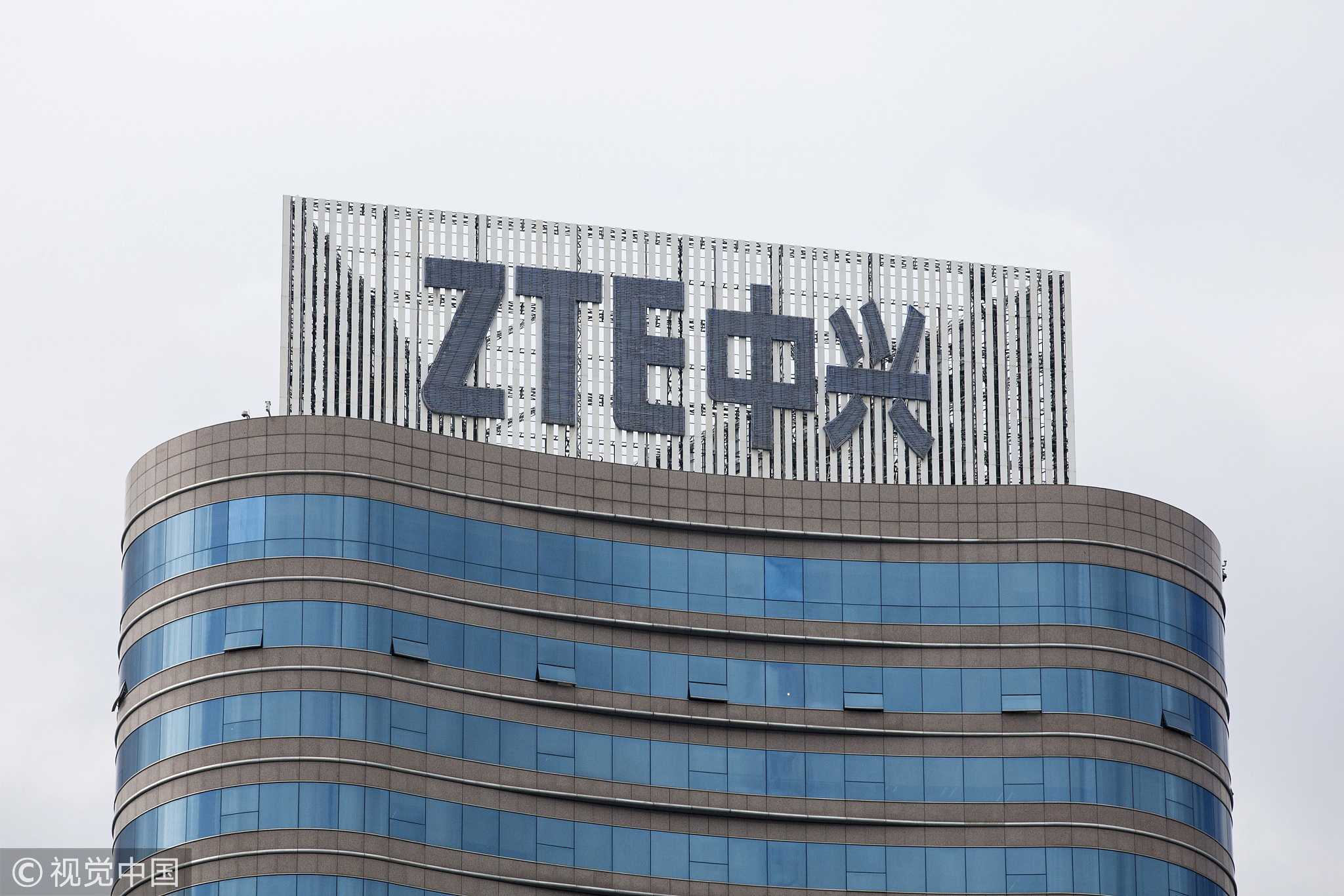
Signage is displayed atop the ZTE Corp. headquarters in Shenzhen, China, on June 4, 2018. ZTE, the Chinese telecom company that's become a focal point of the nation's trade dispute with the US. /VCG Photo.
Signage is displayed atop the ZTE Corp. headquarters in Shenzhen, China, on June 4, 2018. ZTE, the Chinese telecom company that's become a focal point of the nation's trade dispute with the US. /VCG Photo.
Some media also disclosed that China’s ZTE Corporation has entered into and signed an agreement in principle with the US Department of Commerce to allow the company to resume procurement of parts and components from US suppliers and stipulated a series of specific conditions, from ZTE paying fines to reorganizing the board of directors and management.
If these reports are true, it means that the positions of China and the United States on trade disputes are gradually converging.
This long-lasting game between the two sides has already produced some clues. The initial mutual threats are being replaced by practical solutions to problems.
However, the new situation is clearly still unstable, and the process of bargaining between the two sides has not ended.
The US has yet to formally cancel the newly announced plan to impose tariffs on 50 billion US dollars’ worth of Chinese technology products. The trade war is at risk of rekindling at any time. Because of the variability of the United States, China has not relaxed its preparations for the worst case.
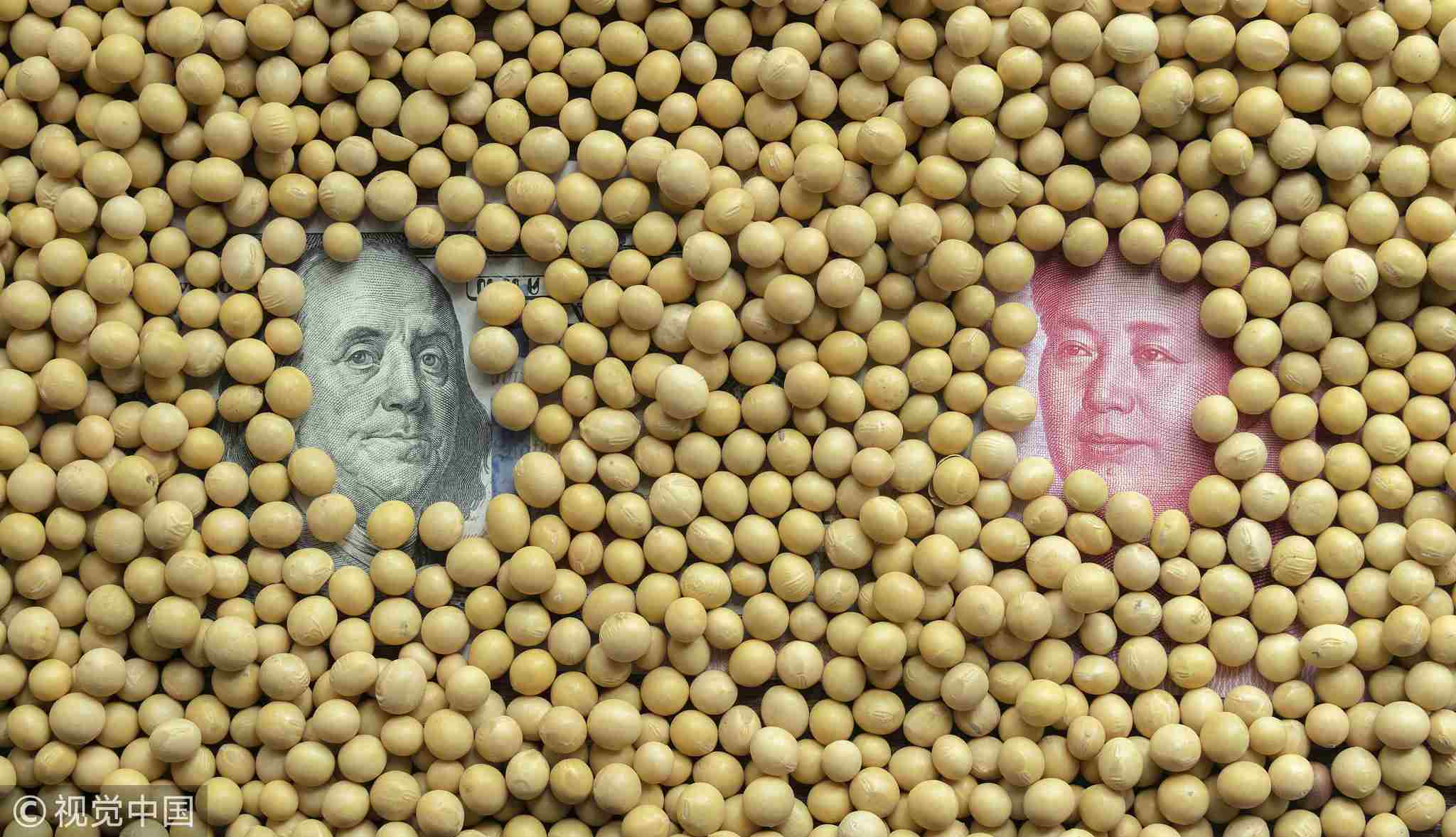
Soybeans and banknotes of US Dollar vsVS RMB. On April 4, the US government issued a customs duty list, which would impose a 25 percent tariff on the 1,333 products exported to China with a total value of 50 billion US dollars. /VCG Photo.
Soybeans and banknotes of US Dollar vsVS RMB. On April 4, the US government issued a customs duty list, which would impose a 25 percent tariff on the 1,333 products exported to China with a total value of 50 billion US dollars. /VCG Photo.
The trade between China and the United States has been turbulent, but the context through which the twists and turns have been made is so simple: the way to resolve trade disputes between China and the United States must be beneficial to both parties and promote win-win results.
China’s expansion of imports of soybeans, sorghum, and other US agricultural products and energy products, and increasing the supply of these products, are positive for meeting the Chinese people’s desire for a better life. It is obviously not a bad thing.
China does not need to maintain a high trade surplus with the United States and use our labor to exchange for banknotes that the United States can print on machines. What is important is that the United States must have more quality products for China's development.
Many scholars have pointed out that by simply selling agricultural products and energy, the United States will eventually face a bottleneck in increasing its exports to China. Its related production capacity cannot be expanded indefinitely, and it is all sold to China.

US Commerce Secretary Wilbur Ross (L) shakes hands with Chinese Vice Premier Liu He as they pose for photographers after their meeting at the Diaoyutai State Guesthouse in Beijing on June 3, 2018. /VCG Photo.
US Commerce Secretary Wilbur Ross (L) shakes hands with Chinese Vice Premier Liu He as they pose for photographers after their meeting at the Diaoyutai State Guesthouse in Beijing on June 3, 2018. /VCG Photo.
The United States has export-dependent insecurity, and China has import-dependent insecurity. Therefore, the United States must develop other industries that can expand its exports to China.
The real advantage of the United States is high technology, but the United States is still implementing strict restrictions on the export of high-tech products to China. If this issue is not resolved, the trade balance between China and the United States cannot be completely resolved.
The United States position is tantamount to forcing itself to become an "agricultural country" and an "oil producer" like the Middle East, pushing itself to the downstream of the industrial chain.
As China is a large country with a population of nearly 1.4 billion, the demand for agricultural products and energy “has few upper limits”, and provides a broad space for Sino-US cooperation.
However, there is a knot on this logic line that also exists objectively. If the United States does not take the initiative to solve it, the corresponding obstruction will appear from time to time.
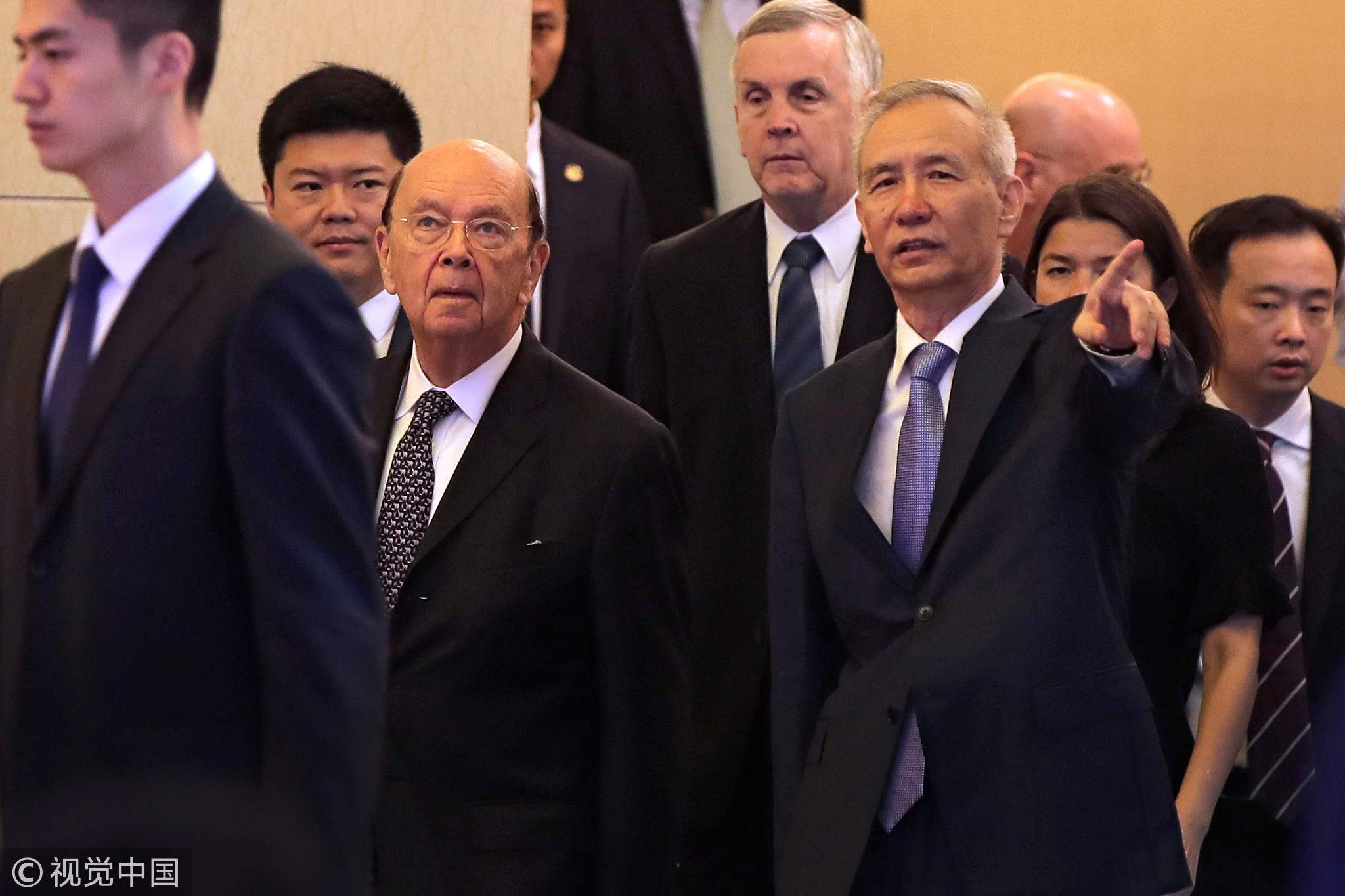
US Commerce Secretary Wilbur Ross (2nd-L) and Chinese Vice Premier Liu He (R) arrive to attend a meeting at the Diaoyutai State Guesthouse in Beijing on June 3, 2018. /VCG Photo.
US Commerce Secretary Wilbur Ross (2nd-L) and Chinese Vice Premier Liu He (R) arrive to attend a meeting at the Diaoyutai State Guesthouse in Beijing on June 3, 2018. /VCG Photo.
After several months of intense friction, American negotiators have probably learned more about the realities of Sino-US trade and their attitude has gradually turned to realism. However, nationalism on trade issues has ignited in the United States.
For example, the punishment of ZTE is a Chinese hostage held by the US to open a trade war against China, but the hostility to ZTE turned out to be true in the United States.
The Trump administration lifted the ZTE sanctions by twists and turns and continued to face obstacles from the US Congress.
Perhaps facing domestic pressure, the US government has been ostensibly listed on the issue of ZTE. It does not link ZTE's business with the trade war.
However, the media are determined to put together the ZTE event and the trade war. They also know that each round of consultations has seen the Chinese government make serious and painstaking negotiations with the US side for the turnaround of ZTE.
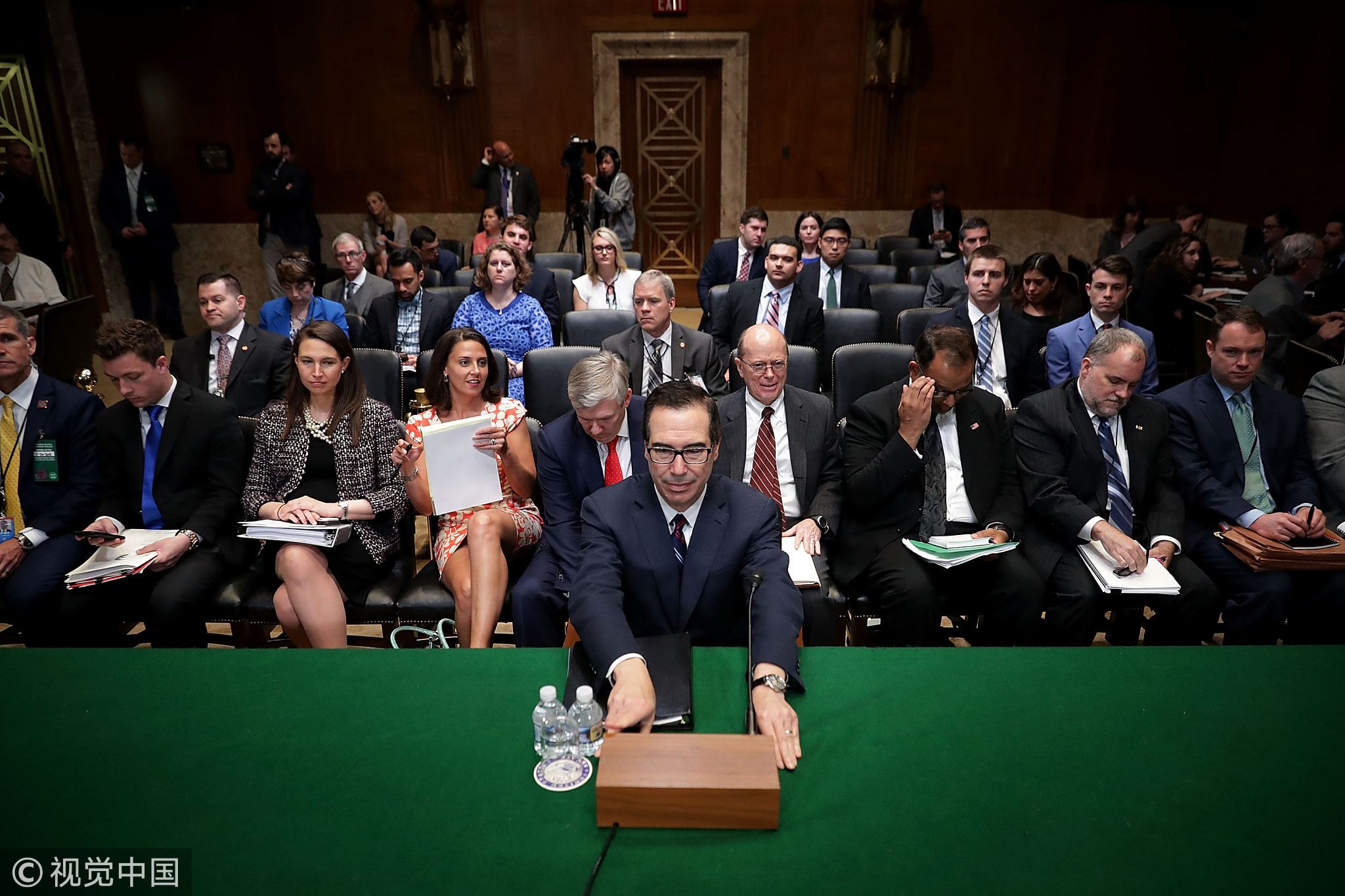
US Treasury Secretary Steven Mnuchin (C) prepares to testify before the Senate Appropriations Committee's Financial Services and General Government Subcommittee in the Dirksen Senate Office Building on Capitol Hill on May 22, 2018, in Washington. /VCG Photo.
US Treasury Secretary Steven Mnuchin (C) prepares to testify before the Senate Appropriations Committee's Financial Services and General Government Subcommittee in the Dirksen Senate Office Building on Capitol Hill on May 22, 2018, in Washington. /VCG Photo.
In the eyes of many analysts, the United States' "release of the hostage ZTE" will be a sign that China and the United States have ended their trade war and begun to implement the agreement reached.
Trump is undoubtedly the toughest American president on the issue of China. However, when his representatives negotiated with China on concrete and feasible solutions, he was once again degenerated into a "weak" on.
In this political game of the United States, China has no obligation to play with it.
It seems that Ross has made achievements in China. The Trump administration’s responsibility is to protect these achievements and not allow it to be dismissed by Congress.
China will maintain a constructive attitude and be prepared to meet the challenge.

